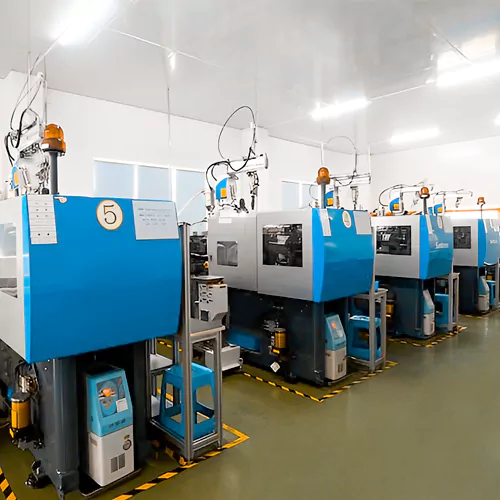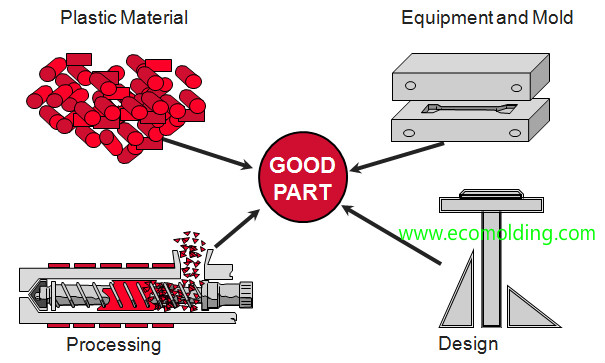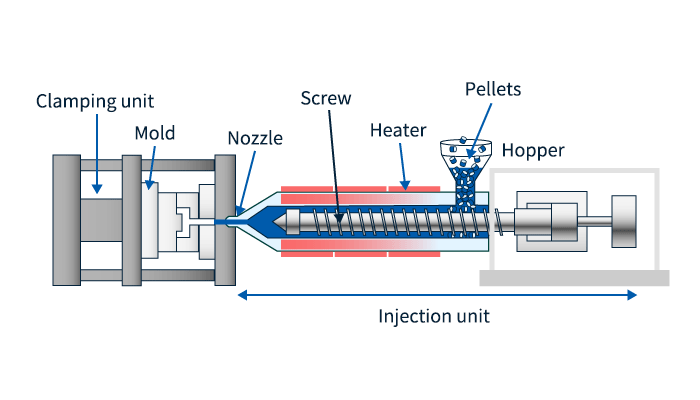The Influence of Plastic Injection Molding on Lowering Manufacturing Prices and Waste
Recognizing the Basics of Plastic Injection Molding Processes
Plastic shot molding works as a cornerstone of modern manufacturing, giving a systematic technique to generating intricate elements with accuracy. This process not only incorporates the basic actions of melting and infusing materials right into mold and mildews however also involves a nuanced understanding of different affecting elements, such as temperature level and stress. As industries progressively demand effectiveness and top quality, the complexities of this technique come to be extra vital. Discovering these important components might expose how even small changes can lead to considerable enhancements in production outcomes, raising questions regarding the capacity for innovation in this established process.
What Is Plastic Injection Molding?
Plastic shot molding is a widely used manufacturing process that transforms polycarbonate and thermosetting products into exact and complicated shapes. This technique is preferred for its ability to produce high quantities of similar get rid of exceptional accuracy, making it an essential method in various markets, consisting of auto, durable goods, and clinical devices.
The process entails thawing the selected plastic product and injecting it into a mold under high pressure. The mold, made to the specifications of the desired component, permits the liquified plastic to take form as it solidifies and cools. Once the material has solidified, the mold and mildew is opened, and the finished element is expelled.
Plastic injection molding offers a number of benefits, consisting of decreased waste, consistency in manufacturing, and the capability to incorporate elaborate designs that might be testing with other making approaches. Furthermore, it supports a wide series of materials, each providing special residential properties that can be customized for certain applications. As industries proceed to innovate, plastic shot molding continues to be at the leading edge, allowing the growth of advanced products that satisfy developing consumer needs.
The Injection Molding Refine
The shot molding process is an innovative strategy that includes several crucial stages to create high-grade plastic components. Plastic pellets are fed into a heated barrel where they are melted right into a thick fluid. This molten plastic is then injected under high pressure right into a precision-engineered mold and mildew, which forms the material right into the wanted type.
When the mold and mildew is filled, the plastic is enabled to solidify and cool down, taking the shape of the mold tooth cavity. Air conditioning time is crucial, as it impacts the cycle time and the final residential properties of the molded component. After adequate air conditioning, the mold and mildew opens up, and the ended up component is expelled using ejector pins.

Materials Made Use Of in Shot Molding
Various products can be made use of in the shot molding process, each offering distinct buildings that accommodate details applications. The most commonly made use of materials include thermoplastics, thermosetting plastics, and elastomers.

Thermosetting plastics, like epoxy and phenolic resins, undertake a chemical adjustment throughout the treating process, leading to a rigid, stringent framework. These products are excellent for applications calling for high warmth resistance and architectural honesty, usually used in automobile components and electrical insulators.
Elastomers, including silicone and rubber-based materials, give adaptability and resilience. Their one-of-a-kind residential properties make them appropriate for applications that demand elasticity, such as gaskets and seals.
Furthermore, specialized materials like bio-based plastics and composites are gaining traction for their ecological advantages and boosted efficiency attributes, expanding the scope of injection molding applications in different sectors. Understanding the residential or commercial properties of these products is crucial for picking the appropriate type for specific jobs.
Advantages of Injection Molding
Shot molding attracts attention as an extremely effective manufacturing process that uses many advantages for creating intricate get rid navigate to these guys of accuracy. Among the most considerable advantages is the ability to create detailed styles that would certainly be tough or difficult to accomplish with other approaches (Plastic Injection Molding). The procedure permits in-depth functions and limited resistances, guaranteeing top quality parts
Additionally, shot molding is known for its rapid manufacturing capabilities, making it a suitable option for high-volume manufacturing. Once the mold is created, parts can be created quickly, lowering lead times and boosting total productivity. This performance not just lowers production expenses but additionally offers an one-upmanship in the marketplace.
The adaptability of products utilized in injection molding even more improves its charm. A wide range of thermoplastics and thermosetting polymers can be employed, enabling producers to pick materials that finest meet their particular requirements, including adaptability, toughness, and warm resistance.
Furthermore, the process reduces waste, as excess material can frequently be reused and recycled. This sustainability aspect adds to a minimized environmental influence, making shot molding an accountable production choice. On the whole, the benefits of shot molding make it a favored technique for numerous industries.
Factors Influencing Product Quality
While countless factors can affect item top quality in injection molding, recognizing these elements is crucial for achieving optimum outcomes. Key facets include product selection, refining specifications, and mold style.
Product selection plays a vital duty, as different polymers show distinct residential or commercial properties that influence flowability, stamina, and thermal stability. Insufficient material selection explanation can result in problems such as bending or insufficient filling.
Handling specifications, including pressure, temperature, and cycle time, need to be thoroughly managed. Variations in these settings can cause variances partially measurements and surface area finish. As an example, excessively high temperature levels may cause deterioration of the polymer, while insufficient stress can cause short shots.
Mold and mildew layout is just as crucial, as it establishes the flow of the molten plastic and the cooling procedure. Poorly designed molds might cause unequal air conditioning prices, resulting in dimensional errors and recurring stresses.

Conclusion
Finally, plastic shot molding works as a critical production procedure that enables the efficient manufacturing of premium elements. Proficiency of the shot molding process, including the understanding of materials and the impact of different variables on item quality, is important for attaining optimum outcomes. The advantages of this method, such as cost-effectiveness and layout flexibility, additional emphasize its significance throughout several industries, strengthening its status as a preferred option for high-volume production.
Plastic injection molding serves as a keystone of modern production, offering a methodical technique to generating complicated components with precision.Plastic injection molding supplies several advantages, including decreased waste, uniformity in production, and the ability to include detailed styles that might be testing with various other making techniques (Plastic Injection Molding). As industries continue to innovate, plastic injection molding continues to be at the center, making it possible for the development of sophisticated items that satisfy advancing customer demands
The injection molding process is an advanced strategy that includes several essential stages to generate top quality plastic components.In conclusion, plastic shot molding offers as an essential production procedure that allows the efficient manufacturing of premium components.